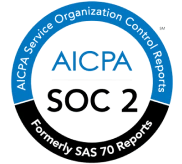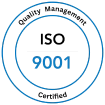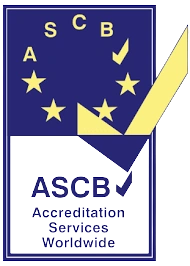Table of Content
- What is Digital HR?
- How does digital HR work and transform HR?
- What is the difference between Digital and Traditional HR?
- Why Digital HR Matters in Today’s Workplace?
- What are the key benefits of Digital HR?
- Real-World Use Cases and Examples of Digital HR
- What is the process of HR digital transformation? step-by-step guide
- Core Components of a Successful HR Digital Transformation Strategy
- Tools and technologies used in digital HR
- How AI and LLMs Are Powering the Future of Digital HR
- Common Challenges in HR Digital Transformation
- How to Measure the Success of HR Digital Transformation
- HR Digital Transformation Best Practices
- Top Digital HR Trends 2025
- Future trends and technologies in digital HR
- Conclusion
- FAQs on what is digital HR?
The global workplace is evolving at a rapid pace. Human Resources (HR) has changed significantly with remote work, hybrid workplaces, and the development of artificial intelligence (AI).
It has been transformed into a business success driver since what was a formerly mainly administration-oriented department has now become a strategic business driver. The change is referred to as Digital HR or HR digital transformation.
This guide will discuss the meaning of Digital HR, how it is different than conventional HR, its advantages, examples of its use, issues, and best practices and the most current trends in HR technology influencing the future of work.
According to a McKinsey 2025 report, organizations adopting AI and digital HR strategies are 1.8x more likely to achieve productivity growth.

What is Digital HR?
Digital HR is the application of technology, automation, and analytics to oversee HR operations, enhance the employee experience, and facilitate business objectives. It does not only involve digitalisation of paperwork but is more about redefining the HR practices with the aid of digitalisation and innovation.
The main features of Digital HR are:
- Human resource digitalisation: Migrating HR records, payroll and employee data to cloud-based applications.
- Automation of Biz Processes: Automation of repetitive processes such as attendance, leave requests, and performance reviews.
- People Analytics: This involves applying data-based information to make superior workforce choices.
- AI in HR: Data Science: Turning chatbots, predictive analytics and machine learning into smarter HR operations.
How does digital HR work and transform HR?
Digital HR incorporates the most recent technologies, such as Artificial Intelligence (AI), Machine Learning (ML), Robotic Process Automation (RPA), and analytics into daily HR operations. These will automate the repetitive processes, enhance precision and liberate the human resource personnel in order to concentrate on strategic processes.
HRMS (Human Resource Management Systems) such as uKnowva HRMS bring a variety of functions operational within the HR sector, including payroll, attendance, performance, learning, and engagement to the same platform. Such integration can give it real-time data visibility, improved decision-making, and improved cross-team collaboration.
As per Gartner’s 2024 report, 67% of enterprises now run core HR operations on cloud HRMS platforms
Digital HR also makes a big use of data analytics. An analysis of workforce information allows HR leaders to estimate turnover, employee satisfaction, and the development of an efficient retention program. This information-based strategy makes HR an ally of business strategy rather than a support unit.
What is the difference between Digital and Traditional HR?
| Aspect | Traditional HR | Digital HR |
| Process | Manual, paper-based, and document-intensive | Automated, digital, and streamlined |
| Focus | Transactional and reactive problem-solving | Strategic, proactive, and data-driven |
| Scalability | Limited scalability; struggles with large workforce | Highly scalable; supports global and hybrid teams |
| Decision-Making | Based on experience or intuition | Driven by real-time data and predictive analytics |
| Employee Engagement | Minimal focus on engagement | Central focus on employee experience and engagement |
| Technology Use | Minimal or basic tools | Cloud-based systems, AI, analytics, and mobile solutions |
| Flexibility | Rigid processes, slow adaptation to change | Agile, adaptable to business and workforce needs |
| Performance Management | Annual appraisals, static goals | Continuous feedback, real-time performance tracking |
| Learning & Development | Classroom-based training, limited tracking | AI-based personalized learning platforms, e-learning |
| Recruitment | Manual resume screening, lengthy process | ATS, automated sourcing, faster hiring cycles |
This comparison shows how digital HR reshapes the function from a transactional, administrative role into a strategic, technology-enabled partner that drives workforce efficiency, engagement, and organizational growth.
Why Digital HR Matters in Today’s Workplace?
The businesses cannot afford to work with old HR systems in a world characterized by remote work, the presence of the gig economy, and the use of hybrid teams. Digital HR matters because:
- It gives employees power by the use of self-service portals and mobile applications.
- It helps to establish a virtual working environment for the HR staff, regardless of their location.
- It leads HR innovation through people strategies to match business results.
- It assists HR individuals in making decisions that are based on facts rather than intuition.
In a word, Digital HR is not an option; it is a need of organizations that want to be competitive.
A recent SHRM study highlights that HR leaders are increasingly playing a strategic role in digital transformation, with many reporting improved decision-making and stronger alignment between technology and people strategies.
What are the key benefits of Digital HR?
Digital HR delivers measurable benefits by increasing efficiency, improving accuracy, enhancing employee experience, and supporting data-driven decision-making. Key benefits include:
- Efficiency and Time Savings
The time spent on manual HR functions such as onboarding, payroll, and attendance check can be many hours or even days. Under the digital HR systems, these activities can be achieved within minutes. By that, the automated onboarding processes, such as offer letters, gathering of employee documents, and system logins are done without the HR having to hunt the employees.
- Accuracy and Compliance
Mistakes made by human beings in payroll, tax returns, or in keeping books may cost companies money and lawsuits. HR solutions are digital, meaning that salaries, deductions, and benefits are automatically calculated according to predetermined rules, and thus, they are accurate. They also produce an audit trail that assists organizations to abide by work regulations and the policies of the organization, eliminating chances of fines and conflicts.
- Increased Employee Experience
The current employee demands the same level of ease of use in the workplace systems that they are able to have with the consumer applications. Through self-service portals, employees will be able to check the leave balance, download payslips, updating personal information, and even request reimbursement without having to wait to be attended to by HR.
- Scalability
As the businesses increase, so does the number of workers. The conventional HR practices do not necessarily scale without the need of employing additional HR personnel. However, digital HR systems enable organizations to coordinate the HR processes with ease regardless of the number of employees (50 or 5,000).
- Decision-Making Analytics of People
People analytics is one of the most effective capabilities of digital HR. Using collected and analyzed workforce data, HR leaders can acquire insight into employee performance, productivity, attrition, and engagement. As an illustration, dashboards may point at overturned or decreasing productivity departments.
- Cost Reduction
It may seem expensive initially, but the costs of investing on HR technology are worth the savings in the long run. Organizations save on expenses by minimizing mistakes (payroll mistakes), administrating less, and removing paper-intensive business.
An example is the cost of record keeping; the cost of storing and operating costs are reduced by use of digital systems instead of manual ones and optimization of processes guarantees optimality of resource usage.
- Reduced Documentation and Improved Documentation
Digital HR gets rid of indefinite filing cabinets and paperwork. The cloud keeps employee records, contracts and compliance documents safely. This does not only enhance access, but also offers enhanced protection of data and simplified audits. HR teams can access files in a matter of seconds and not go through files.
- Improved Communication and Cooperation
The current HRs act as collaboration tools. Such features as in-app chat, announcements, surveys, and feedback tools allow making communication within teams quicker and more open.
This creates an online working environment in HR, where both employees and managers remain connected irrespective of their location and thus increase interaction in a hybrid and remote environment.
According to Select Software Reviews HR Statistics, organizations using HR software reduce administrative costs by double-digit percentages while boosting accuracy.
Real-World Use Cases and Examples of Digital HR
Digital HR is widely applied across industries to automate processes, improve accuracy, and enhance employee experience. Common real-world use cases include:
- Recruitment Automation: The Applicant Tracking Systems (ATS) saves time in hiring by automatically screening resumes and putting in place interviews.
- Performance Reviews: An AI-based HR platform enables organisations to provide feedback on time and recognize top employees.
- Payroll Automation: Multinational companies are using cloud-based payroll to maintain compliance in various countries.
- Learning & Development: AI-based solutions suggest employees custom training, which increases the turnout rates.
- Mobile HRMS: Mobile-enabled HRMS are applicable to logistics companies where attendance is also used, which increases visibility of the workforce.
Multinational companies are using cloud-based payroll to maintain compliance in various countries. Lano Case Study: Automation of Global Payroll in a Financial Company
These use cases show how Digital HR improves efficiency, compliance, and employee engagement while reducing administrative workload.
What is the process of HR digital transformation? step-by-step guide
HR digital transformation is a purposeful, planned change of manual, paper-based, and siloed HR processes into data-driven, automated HR systems that are employee-focused. The following is a simple step-by-step guide that can help to make such a switch viable and sustained.
- Establish the vision and business results
Start with why. Tie HR transformation to the overall business agenda - quicker recruitment, reduced turnover, higher output, or more employee experience. Measure results (e.g., time-to-hire will decrease by 30 percent).
- Assess current state
Chart current HR processes, systems, quality of data, pains. HR, managers and employees Interview employees to determine bottlenecks (manual approvals, pieced together data, paper forms).
- Prioritize use cases
First, choose high-impact, low-friction projects, such as payroll automation, digital onboarding, core HRMS, applicant tracking, or time and attendance. The quick wins create momentum and pay off.
- Architecture the target operating model
Make decisions regarding which processes are to be automated, which data will be centralized, and what the roles will be. Establish integrations required (payroll, finance, ERP), compliance requirements, and security controls.
- Choose technology wisely
Compare the needs and capabilities of vendors (HRMS, HCM suites, recruitment tools, LMS, analytics) to your needs: scalability, integration APIs, mobile experience, localization, and vendor support. Favour designs that are modular to be able to implement in stages.
- Migrate, Govern data migration
Purify and standardize HR data prior to migration. Establish data ownership, access, retention and privacy governance rules (GDPR, local laws). Practices in good data lead to future headaches.
- Implement in phases
Implement core modules initially (employee master, payroll, leave). Next would be recruitment, performance, learning, and analytics. Test actual workflows with the help of agile sprints and pilot groups.
- Train and change-manage
Invest in systematic training, departmental help desk, and champions. Discuss culture - describe the benefits, mitigate fears and fears of automation, and promote initial achievements.
- Measure, iterate, optimize
Follow-up KPIs (time-to-hire, payroll correctness, engagement metrics). Identify trends and process optimization using HR analytics. Repeat: feature add, polish, and expand.
- Sustain and evolve
Integrate continuous improvement in HR. Remain receptive to new technology (AI to source, predictive attrition models, etc.) and never make changes without relating them to business impact.
When done properly, HR digital transformation decreases the amount of work by the administration, empowers individuals, and transforms HR into a strategic partner.
Core Components of a Successful HR Digital Transformation Strategy
In order to successfully apply Digital HR, organizations have to pay attention to:
- Easy-to-use Systems: Those systems that are simple to navigate by employees.
- Integration: Smooth integration with CRM, ERP and accounting systems.
- Adaptable Workflows: Adaptable to company-specific work.
- Employee Self-Service: The flexibility of letting the employees take charge of their personnel records.
- Analytics and Reporting: Measuring digital HR metrics and KPIs in order to improve continuously.
- High Praise: A trusted HR technology ally means flawless adoption and training.
Tools and technologies used in digital HR
Digital HR is based on innovative tools and technologies which automate processes, improve decision-making, and improve the employee experience. These are constituents of a digital HR ecosystem of an organization. Here are the key ones:
- Human Resource Management System (HRMS)
HRMS such as uKnowva HRMS integrates the main HR functions - employee data management, payroll, attendance, source of leaves and performance appraisal. It decreases the paperwork and provides compliance with self-service portals of employees and managers.
- Applicant Tracking System (ATS)
Recruiting tools automate the recruitment process through posting of job, screening of resumes, scheduling of interviews, and monitoring of progress of job seekers. ATS solutions, incorporating them into a single entity, make hiring more efficient.
An LMS provides and manages training and e-learning among employees and their development of skills. The LMS tools that use AI customize the learning path depending on the performance data and employee role.
These are automated goal-setting, self-review, feedback and appraisal tools. They assist the HR and managers keep track of the progress in real-time and retain transparency in the performance review.
- Payroll and Compliance Software
Payroll solutions guarantee the correct payment of salaries on time and address the statutory compliance (PF, ESI, tax deductions, etc.). Compliance updates should be automated such that HR teams remain abreast with new labor regulations.
- Employee Engagement Solutions
Surveys, feedback channels, and recognition systems are some of the digital engagement tools used to measure employee satisfaction and lift morale. Such aspects as polls and social intranet encourage open communication and collaboration.
- HR Reporting and Analytics
HR analytical tools are based on data to predict trends such as the risk of attrition, hiring requirements and productivity of the workforce. Dashboards break down complicated data into strategic planning actions.
How AI and LLMs Are Powering the Future of Digital HR
Artificial Intelligence (AI) and Large Language Models (LLMs) are transforming HR by automating tasks, improving decision-making, and creating predictive solutions.
- AI in Recruitment: The AI predicts turnover, pairs talent with jobs, and lessens bias.
- Chatbots & Virtual Assistants: Provide answers on frequently asked questions, leave balances, and direct employees on HR procedures.
- Predictive Analytics: Predicts the trends in the workforce and locates the risks of engagement.
- HR Innovation LLA: Assists with writing job descriptions, training materials, and policy documents more quickly and efficiently.
HR digital transformation is not just about adopting tools but following a structured process that ensures technology, people, and strategy work together seamlessly.
Deloitte’s 2024 Human Capital Trends report shows that 73% of HR leaders are already using generative AI for recruiting and employee engagement.
Common Challenges in HR Digital Transformation
Although the advantages are evident, companies have to struggle with difficulties in digitalisation:
Learning Curve: Employees who are not digital savvy might find it tricky to learn new systems.
Customisation Delays: Workflow customisation is time-consuming.
Integration Issues: Older systems might not integrate well with new systems.
Resistance to Change: Employees might be opposed to the transition between manual and automated workflows.
Short-Term Costs: The start-up costs of small firms may be high.
The challenge of HR digitalisation above will need training, effective leadership, and selecting the appropriate HRMS partner.
How to Measure the Success of HR Digital Transformation
Digital HR transformation success is measured using key performance indicators (KPIs) that reflect efficiency, accuracy, and employee experience. Common metrics include
- Recruiting Price per Applicant
This metric calculates the total recruitment cost divided by the number of applicants. It includes expenses such as job postings, recruiter fees, software costs, and interview resources. A declining cost per applicant after digital transformation signals improved efficiency in talent acquisition through automation and targeted - Employee Turnover and Retention Rate
These metrics assess how long employees stay within the organization. High turnover can indicate engagement issues or inefficient HR processes, while improved retention shows that digital tools—like engagement platforms, recognition systems, and career development trackers—are enhancing employee satisfaction and loyalty. - Training Attendance and Completion Rates
Digital learning platforms and LMS tools enable HR teams to track who attends and completes assigned courses. High attendance and completion rates indicate that employees find the training accessible and relevant, while low rates may highlight a need for better content delivery or motivation strategies. - Percentage Accuracy of Payroll
Payroll accuracy is a critical HR performance metric. Automation within HRMS ensures error-free salary calculations, tax deductions, and compliance management. Tracking this percentage helps identify system efficiency and minimizes employee grievances related to compensation errors. - Employee Satisfaction and Engagement Levels
Employee surveys, feedback tools, and engagement platforms measure satisfaction and morale. Improved engagement scores after implementing digital HR tools suggest that employees feel more connected, valued, and empowered through transparent communication and accessible HR services. - Process Cycle Times (e.g., Leave Approvals, Onboarding)
Cycle time measures how quickly HR processes are completed. For example, the average time taken for leave approvals or new employee onboarding. A reduction in these times reflects streamlined workflows, automation, and improved HR service delivery.
By continuously monitoring these metrics, HR teams can ensure that digital transformation not only improves efficiency but also strengthens employee relationships, aligns HR strategies with business goals, and drives long-term organizational growth.
HR Digital Transformation Best Practices
Best practices should be adhered to by companies in order to enable a smooth transition:
- Start Small, Scale Fast: Choose a single process (such as payroll or recruiting) to begin with and scale.
- Create Employee-centered Experience: Select tools that the employees can find useful and interesting.
- Invest in Training: Upskill the employees to embrace new digital tools.
- Assure Data Security: Secure data of employees with high security.
- Choose the Appropriate Business Partner: The uKnowva HRMS is a platform that is scalable, economical, and innovative to businesses of any size.
Top Digital HR Trends 2025
The contemporary HR environment is shifting at a very fast pace with the assistance of advanced technologies. Such innovations do not only automate repetitive processes but allow smarter and data-driven decision-making and improve employee experience.
The following are among the most disruptive technologies that usher in digital HR:
HR Artificial Intelligence: Chatbots to Predictive Analytics
AI is transforming all HR functions, such as recruitment to retention. Employee queries, scheduling interviews, and onboarding of new employees are handled by AI-powered chatbots. On the other hand, predictive analytics involves the analysis of workforce data to predict their likelihood of leaving the company, high performers and recommending career paths using individualized information.
Remote and Hybrid Workforce Tools: Distributed Teams Management
As remote work is the new reality, HR uses such tools as digital attendance monitoring, project work organization applications, and online communication programs. These technologies make communication consistent, performance is easily tracked and communication is continuous- the technologies are useful in maintaining productivity and culture within an organization even when employees occupy different places.
People Analytics: Workforce Planning by Data
People analytics uses big data to identify trends of performance, engagement, and turnover among the employees. The analysis of this information can help HR executives make sound decisions in recruitment, promotion, and human resource planning. It changes the HR into a business partner that is business results-oriented.
HR Blockchain: Contracts, Payroll and Employee Records
The use of blockchain technology improves the efficiency, transparency and security in HR functions. It has the capability of storing employee credentials, work history, and payroll information and thereby minimizing fraudulent activities and manual authentication. The onboarding, benefits distribution and cross-border payments are also simplified by smart contracts.
Monitoring Stress and Engagement: Making Employee Well-being Automated
Sentiment analysis tools based on AI and wearable devices can be used to track the stress levels of employees and their engagement in real time. These systems identify possible burnout threats to HR managers in time. Other solutions to ensure a healthy, motivated workforce are automated well-being programs and digital mental support platforms.
Continuous Learning Platforms: Custom AI-based Training
Learning management systems based on AI propose courses that are based on the job position, skill deficiencies, and career aspirations of an employee. They ensure that the process of learning is ongoing and interactive so that employees remain future-oriented as well as aligned with the requirements of an organization.
Training in Virtual Reality (VR) and Augmented Reality (AR)
VR and AR technologies can be used to provide fully immersive learning, especially where on-the-job training is necessary, such as in manufacturing, medical or service fields. The technologies improve retention, safety, and participation in employee learning programs.
Collectively, these technologies are reinventing the role of HR as a more agile, predictive, and people-centred business operation that helps to make people and the business successful.
Future trends and technologies in digital HR
The future of HR is digital, data-oriented, and people-oriented. With the changing nature of organizations, HR departments are becoming smarter to utilize smart tools and technologies to manage their talent and productivity, as well as staff involvement. The following are the current trends and technologies that are defining the future of digital HR:
- Artificial Intelligence and Predictive Analytics of Smarter Decision-Making
Artificial Intelligence will keep transforming HR by forecasting staff turnover, determining skills shortages, and enhancing the precision of hires. Predictive analytics will assist the HR departments in predicting future staffing needs and develop proactive talent plans.
- Data-Driven HR and People Analytics
The analytical processing of data will become a part of the HR process, as it will assist companies in making informed decisions. It allows leaders to interpret performance, engagement and productivity trends and makes HR no longer a support but a strategic business partner.
- Employee Experience Platforms (EXPs)
HR will be interested in developing single-employee experience platforms, where payroll, performance, communication tools, and engagement tools are available in a single place. Such platforms will provide self-service and personalized dashboards to the employees.
Forrester: According to Forrester’s Employee Experience in the Age of AI report, organizations that leverage AI to personalize learning and engagement see higher productivity, stronger retention, and improved workplace satisfaction.
- Artificial Intelligence-based Learning and Upskilling Solutions
The AI-driven continuous learning platforms will offer recommendations to the course, monitor the progress, and tie the learning objectives with the business-level goals. This will keep the employees competitive and flexible in a fast-shifting job market.
- Remote and Hybrid Workforce Technologies
With the hybrid work trend persisting, HR will depend on online teamwork tools, online HRMS, and online engagement systems to effectively manage the distributed team without compromising culture and performance benchmarks.
- HR in Virtual Reality (VR) and Augmented Reality (AR)
The use of VR and AR will revolutionize the process of boarding, training, and teamwork. New workers will be able to learn about virtual offices and undergo immersive training and gain experience of real-life work situations in a safe way.
- HR Voice and Chatbot Assistants
Employee questions will be answered by conversational AI, onboarding will be supported, and real-time information about policies, leaves, and benefits will be available, making the HR support even faster and efficient.
Digital HR is future-centred on harmonising technology and human understanding. With robots handling the administration side, HR leaders will become more creative, cultural, and connected-making sure that technology serves as an empowerment, rather than a replacement, of the human aspect of the workplace environment.
Conclusion
Digital HR does not necessarily mean adoption of technology, but rather a change of mindset that will make HR a strategic business partner. With the digitalisation of human resources, automation of HR processes, people analytics, and AI in human resources, organizations are able to make workplaces smarter and more engaging.
The future of HR lies in innovation, agility, and predictive insights, and businesses that embrace digital transformation now will be best prepared for the challenges of tomorrow.
FAQs on what is digital HR?
-
What is Digital HR Transformation?
Digital HR Transformation is the process of modernizing traditional HR functions by adopting technology, automation, and data-driven tools. It aims to streamline HR processes, improve employee experience, and enable strategic decision-making using digital solutions.
- What is the disadvantage of digital HR?
A major disadvantage of digital HR is the high initial cost and complexity of implementation. Additionally, excessive automation can reduce the human touch in employee interactions if not balanced well.
- What are the 4 pillars of digital transformation?
The four pillars of digital transformation are:
- Process Transformation – Redesigning business and HR processes for efficiency, automation, and agility.
- Technology Integration – Implementing digital tools and platforms like HRMS, AI, and cloud systems.
- People and Culture – Building a digital mindset, upskilling employees, and fostering innovation.
- Data and Analytics – Leveraging data for insights, predictive decision-making, and continuous improvement.
- What is digital HR technology?
Digital HR technology refers to software, tools, and platforms that automate, streamline, and optimize HR processes. It includes systems for recruitment, payroll, performance management, learning, employee engagement, and analytics, enabling data-driven and efficient HR operations.
-
How is Digital HR different from traditional HR?
Traditional HR relies heavily on manual processes and paperwork, which can be time-consuming and prone to errors. In contrast, Digital HR automates and digitizes these tasks, providing real-time data, faster processing, and deeper insights. It focuses on employee experience, predictive analytics, and strategic decision-making, whereas traditional HR often concentrates on administrative functions.
-
What does digital HR do?
Digital HR automates and streamlines HR processes like recruitment, payroll, performance management, and employee engagement. It also provides data-driven insights to improve decision-making and enhance the overall employee experience.
-
Why is Digital HR important for organizations today?
Digital HR is crucial because it helps organizations stay competitive in a rapidly evolving workforce. It enables HR teams to make data-backed decisions, improve employee engagement, streamline operations, and adapt to remote or hybrid work models. Additionally, it enhances compliance with labor laws, reduces operational costs, and supports scalable growth.
-
What technologies are used in Digital HR?
Some common technologies powering Digital HR include:
- Cloud-based HRMS (Human Resource Management Systems) for centralized employee management.
- Artificial Intelligence (AI) for talent acquisition, skill mapping, and predictive analytics.
- Robotic Process Automation (RPA) for repetitive task automation.
- People analytics tools for workforce planning and performance tracking.
- Mobile apps and self-service portals to enhance employee experience.
-
How does Digital HR improve employee experience?
Digital HR empowers employees with self-service tools to manage their profiles, apply for leave, access payslips, and track performance in real-time. It provides personalized learning recommendations, transparent communication channels, and seamless onboarding experiences. This reduces frustration, builds trust, and boosts engagement and retention.
-
Can small businesses also benefit from Digital HR?
Absolutely! Small businesses can use affordable, cloud-based HR tools to manage recruitment, attendance, payroll, and compliance. Digital HR reduces manual workload, minimizes errors, and helps small companies scale quickly without needing large HR teams. Many SaaS-based HR platforms offer cost-effective plans suitable for startups and SMEs.
-
What challenges do organizations face when implementing Digital HR?
Some common challenges include:
- High initial investment in technology and training.
- Resistance to change from employees or leadership.
- Data security and privacy concerns when moving to digital platforms.
- Difficulty in integrating new systems with existing legacy software.
- The need for continuous skill upgrades among HR professionals.
-
What is the future of Digital HR?
The future of Digital HR will focus on AI-driven decision-making, advanced predictive analytics, and hyper-personalised employee experiences. With the rise of remote work, gig economies, and global talent pools, HR will play a more strategic role in shaping workplace culture and business growth. Additionally, technologies like virtual reality (VR) onboarding, blockchain for secure HR data, and smart chatbots will become mainstream.













